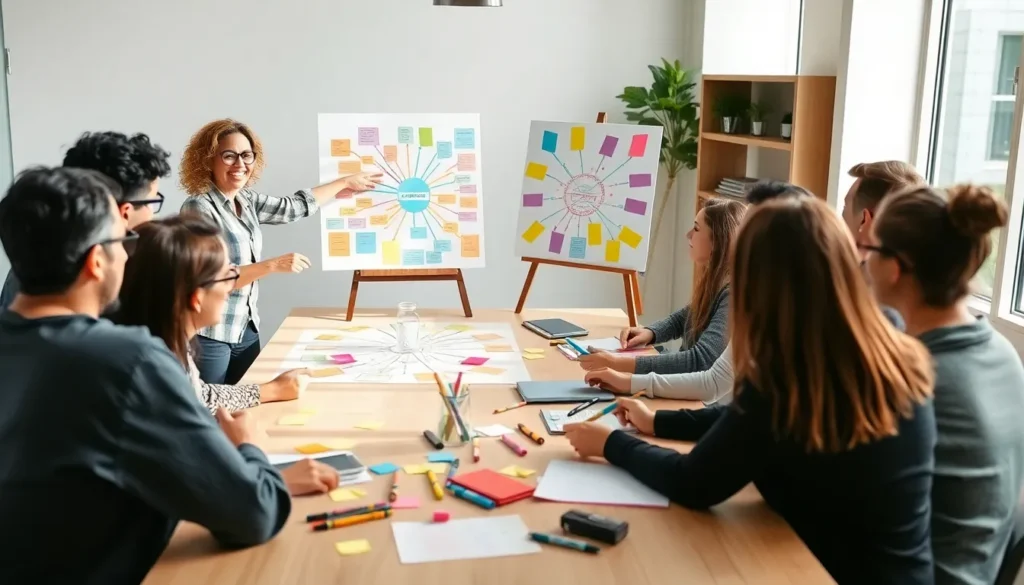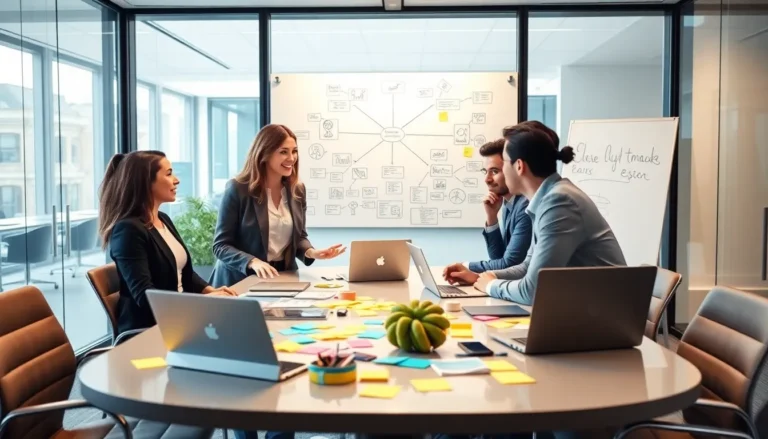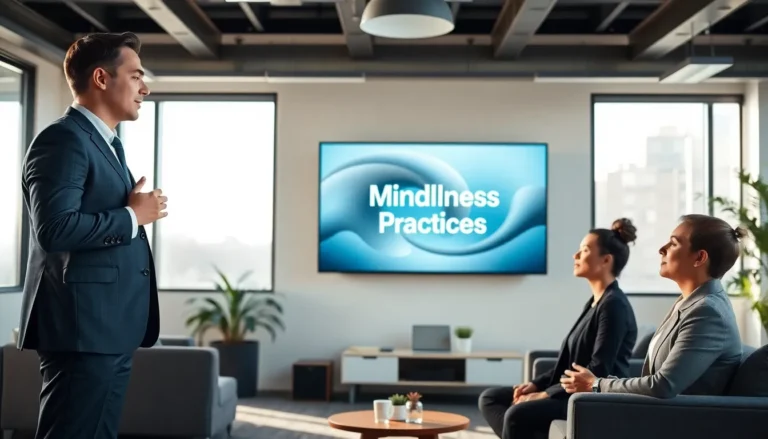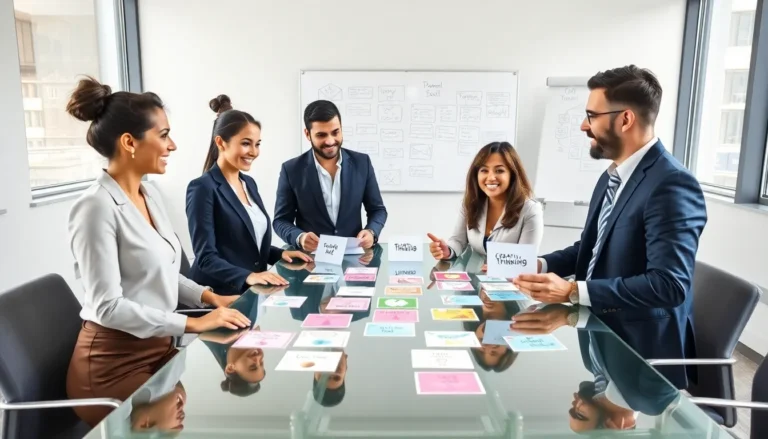Table of Contents
ToggleIn a world where meetings often feel like a slow march through molasses, creative facilitation swoops in like a superhero armed with colorful markers and sticky notes. It transforms dull discussions into vibrant brainstorming sessions that spark innovation and collaboration. Imagine turning a room full of yawns into a hive of energy and ideas, where every voice matters and creativity flows like coffee on a Monday morning.
Creative facilitation isn’t just about making things pretty; it’s about unlocking potential and breaking down barriers. With the right techniques, facilitators can guide teams to think outside the box—or even toss the box out the window entirely. Whether it’s a corporate retreat or a community workshop, the power of creative facilitation can elevate any gathering from mundane to magical. So, let’s dive into the art and science of this dynamic approach and discover how it can revolutionize the way we work together.
Overview of Creative Facilitation
Creative facilitation fosters an engaging atmosphere for brainstorming and collaboration. It enhances meetings and workshops by transforming traditional structures into dynamic experiences. Facilitators leverage innovative techniques that encourage participants to express ideas openly. Participants often find their creative potential unlocked through structured activities and purposeful dialogue.
Utilizing diverse approaches, creative facilitators create environments conducive to collaboration. Examples include visual thinking, storytelling, and interactive games. Each technique serves to stimulate creativity while maintaining focus on objectives. By integrating these methods, facilitators help individuals and groups navigate complex discussions.
The goal of creative facilitation encompasses unlocking latent creativity and driving collective problem-solving. Participants become active contributors rather than passive attendees. Enhanced engagement leads to increased innovation, resulting in compelling outcomes. Additionally, attention to group dynamics helps facilitators recognize and address any challenges that arise.
Measuring the impact of creative facilitation involves tracking participant satisfaction and the quality of generated ideas. Surveys and feedback sessions provide insight into the effectiveness of the facilitation approach. Within organizations, adopting creative facilitation can lead to more productive teamwork and improved project outcomes. Embracing this practice encourages continuous improvement in facilitating group discussions. Thus, it paves the way for lasting change in how teams operate and collaborate.
Importance of Creative Facilitation
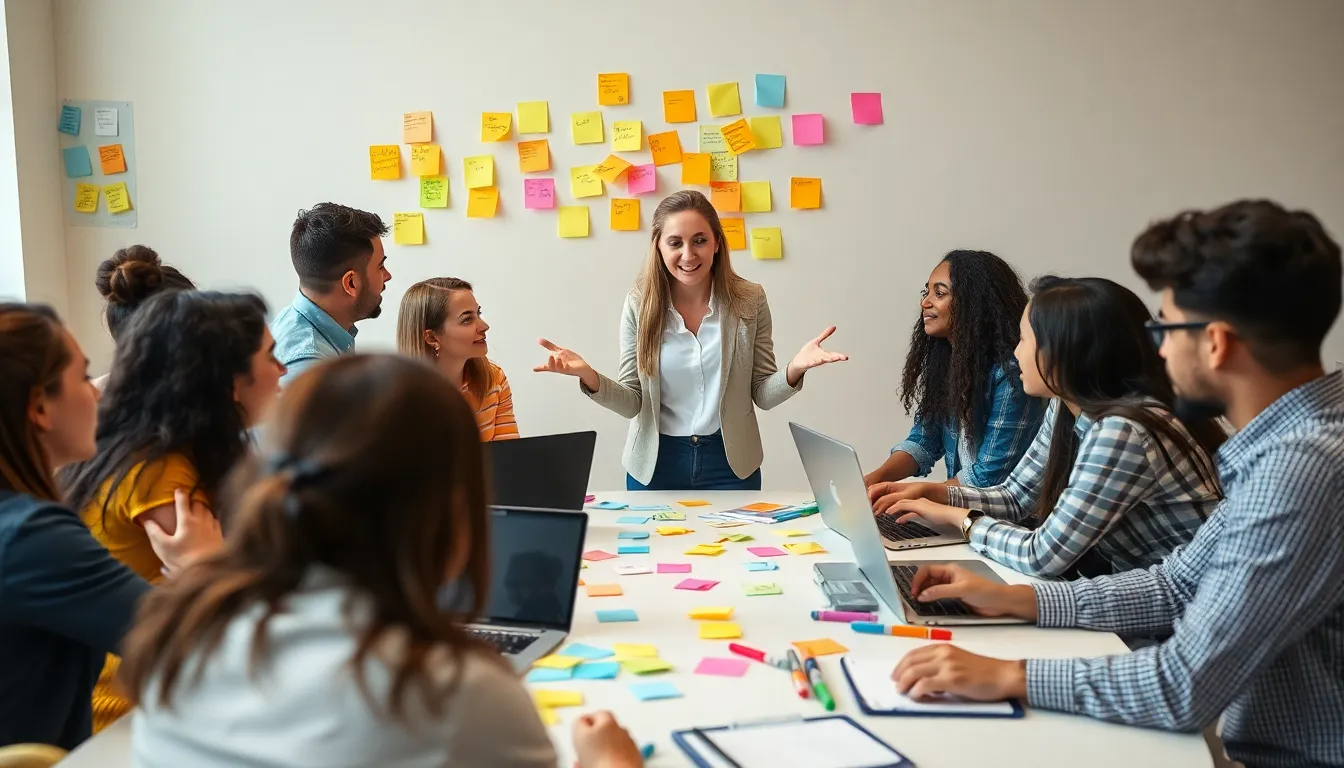
Creative facilitation plays a crucial role in meetings and workshops, transforming interactions into meaningful experiences. It cultivates an environment that encourages participation and idea sharing.
Enhancing Collaboration
Collaboration becomes more effective through creative facilitation techniques. Engaging activities, such as role-playing and group discussions, encourage participants to express diverse perspectives. This approach breaks down barriers, promoting both trust and communication. Furthermore, facilitators can use visual aids, like mind maps and diagrams, to clarify complex ideas, enhancing collective understanding. When team members feel valued and heard, their willingness to contribute also increases, leading to more productive teamwork.
Fostering Innovation
Innovation thrives within a creatively facilitated environment. By implementing brainstorming sessions that prioritize open thinking, facilitators can generate a wealth of ideas. Techniques like rapid prototyping and idea mapping encourage participants to explore concepts without fear of judgment. Groups benefit from structured yet flexible spaces where creativity can flourish. Additionally, facilitating diverse input stimulates unique solutions, empowering participants to think outside the box. As a result, organizations experience increased adaptability and competitive advantage.
Key Techniques in Creative Facilitation
Creative facilitation employs various techniques to enhance engagement and collaboration. These methods foster a supportive atmosphere that encourages innovative thinking.
Brainstorming Methods
Brainstorming methods play a critical role in creative facilitation. Structured approaches like mind maps and the SCAMPER technique promote divergent thinking. Effective brainstorming sessions encourage participants to express new ideas, prioritize creativity, and remain open to various concepts. Techniques such as round-robin brainstorming allow each participant to contribute without interruption, enhancing inclusivity. Focused discussions based on specific prompts can also clarify visualizations of potential solutions while stimulating collaboration. Bringing in diverse perspectives enhances idea generation and uncovers unique solutions to challenges.
Visual Thinking
Visual thinking enhances comprehension and retention during meetings. Tools like sketches, diagrams, and charts serve as powerful aids for articulating complex ideas. Facilitators can employ these tools to summarize discussions and highlight key points visually. Engaging participants in creating their own visual aids fosters ownership and investment in the process. Multiple types of visuals improve memory recall and facilitate clearer communication among team members. Utilizing visual thinking techniques ultimately transforms abstract concepts into tangible results, strengthening collaborative efforts in creative environments.
Challenges in Creative Facilitation
Creative facilitation encounters various challenges that impact its effectiveness and overall outcomes.
Resistance to Change
Resistance to change is a common barrier in creative facilitation. Many participants feel comfortable within established routines and may hesitate to embrace new ideas or processes. Facilitators often face skepticism when introducing innovative techniques. This resistance can stem from a fear of failure or uncertainty about the new methods. Addressing these concerns requires clear communication and reassurance that experimentation leads to growth. Establishing a safe environment encourages participants to share their thoughts. Gradually, overcoming this resistance fosters open-mindedness and greater participation during sessions.
Managing Group Dynamics
Managing group dynamics presents another challenge for facilitators. Different personalities and communication styles can create tension in collaborative settings. Some individuals may dominate discussions, while others might remain silent. Balancing participation becomes crucial to ensure that all voices are heard. Implementing structured activities helps mitigate this issue. Introducing small group discussions or rotating roles encourages quieter members to contribute. Facilitators can also observe body language and engagement levels to adapt their approach. By effectively navigating group dynamics, facilitators create an inclusive atmosphere conducive to creativity and idea generation.
Creative facilitation stands as a powerful tool for transforming how teams collaborate. By fostering an engaging environment and employing innovative techniques, facilitators can unlock creativity and drive meaningful discussions. This approach not only enhances participant satisfaction but also leads to more effective problem-solving and project outcomes.
As organizations embrace creative facilitation, they pave the way for a culture of innovation and adaptability. The ability to navigate group dynamics and encourage diverse contributions is essential for success. Ultimately, adopting this practice can revolutionize teamwork and empower individuals to contribute their best ideas.

